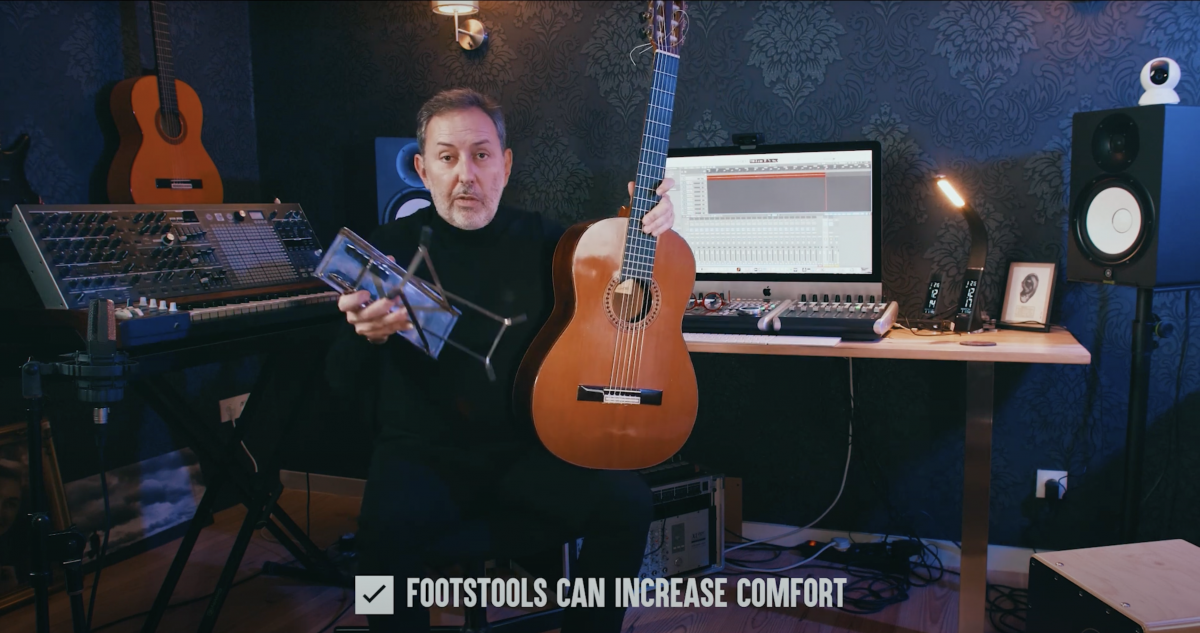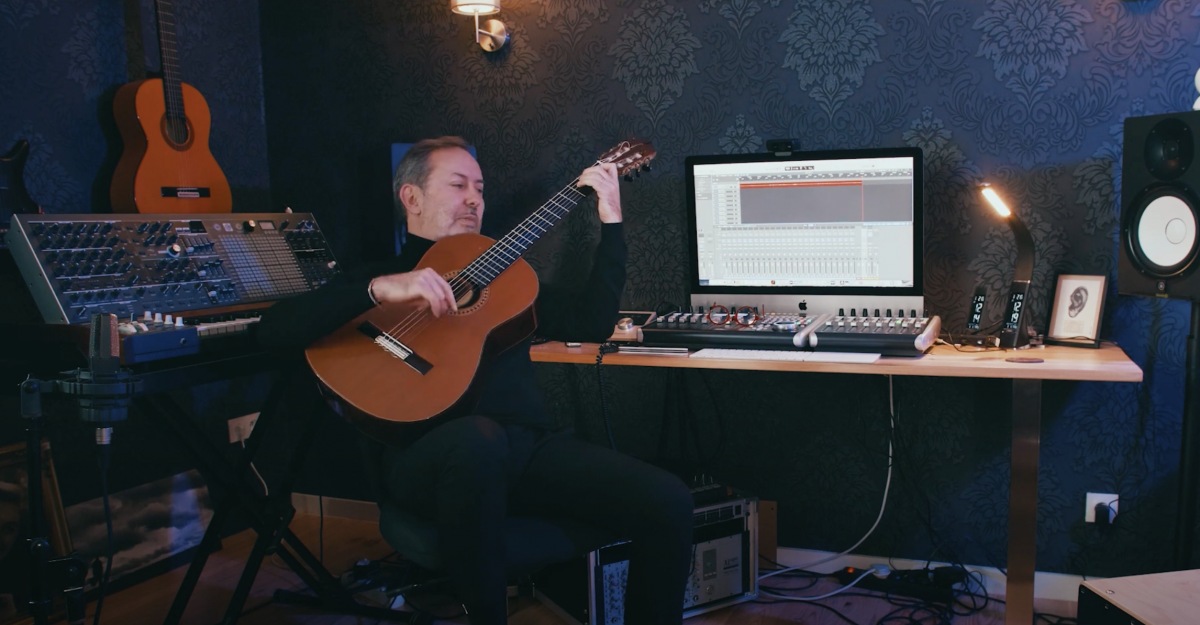Summary of Why Guitar Posture Matters
If you like back pain, or in being forced to stop playing after years of dedicated practice, then this article is not for you.
If you do like being able to pick up new songs, riffs and being able to play for longer without getting tired - then this article is for you!
In a lesson that only takes 5 minutes, this is one of these low-effort high impact things that will improve your playing in both the short and long term. There is no one correct 'way' to sit and hold a guitar – there are three or four. Let's take a look at them.
(This article involves a lot of visual material not easily demonstrated by words; therefore we recommend watching the video below instead).
Traditional Posture / Flamenco Guitar Position
There are many different ways to sit in flamenco and classical guitar. Some ways are better than others at increasing playing comfort and reducing injury. Injury and pain are real things that many performers and those who practice for long periods will begin to encounter over as they age. To avoid unnecessary discomfort and injury, it is worth reviewing your posture.
Traditionally we sit in flamenco with a straight back, and having your feet flat on the ground. This is especially relevant for those working on computers or at an office for most of their day. Make sure your back is as good as possible.
Then place the curve of the guitar into your hip.

Aim for roughly 40 to 45 angle between the guitar and your chest, so the guitar is pointing out.

The good thing about this flamenco position is that you can sit this way for hours on end. Which is good for long periods of practice, which become more frequent as you move from a beginner to an intermediate musician.
When starting out, if you're practising for an hour a day, you can sit like this for 10/15 minutes. After we recommend you change to another seated posture below, to get familiar with a number of positions and movements.
Modern posture
It is important to try other seated positions to avoid aches in your legs and back. People generally move and change positions in life and playing guitar is not different; it is a natural response of the body.
When Paco du Lucia arrived on the flamenco scene, he used a different 'modern' posture which revolutionised flamenco guitar. It involves placing your right leg over your left leg. As before, you still place your guitar in your hip, with a relaxed left hand and right shoulder.

The problem with this position however is that after a short while you start to get aches – see for yourself!
A middle way: the modern posture with a footstool
A third way is to use a footstool, instead of crossing your legs. This is Rafael's preferred way of playing over longer durations, allowing for the comfort of the modern position while avoiding pains and aches over. In the image below you can see Rafael's right leg (on the left of the image) is lifted higher thanks to a footstool

Footstalls do not need to be fancy. You can find them on Amazon from $10/ £10 / €10. You can experiment with their position to see what feels right for you.

Classical guitar posture
In classical guitar, musicians tend to place the guitar on the opposite leg – as demonstrated below. There is no right or wrong way in the context of flamenco, but this is a common difference between flamenco and classical guitarists. Arguably the posture for the classical guitarists allows them to focus more on technical work on the fretboard, whereas the flamenco posture allows for more fluid open strumming with certain styles – although in many instances it is not useful to generalise and it comes down to player preference.

How not to sit
But whatever you do during practice, please do not sit as Rafael demonstrates below. It will result in inferior practice and entrench bad habits which will be harder to remove in the future.
Of course it is OK to relax while playing, and a very natural inclination after a long day's work – but please do not make this part of your disciplined practice – for your playing (and body!) will suffer as a result.

So there you have it – three ways to sit - three postures - while playing the flamenco guitar. We encourage you as you begin your journey to try all three and see what feels best. In reality, if you are like most players you will experiment with a variety, so you can pick up and play in a number of settings (at a friends' house, at the local bar, or in a concert hall, or in your house).
Once you have your posture sorted, move onto the next lesson about the left hand in flamenco guitar.
Learn from a Master Who's Performed for Royalty: Start Your Flamenco Journey Today
- Unlock this article & video library for free
- Join thousands of guitarists who finally got past only 'knowing some basic chords'
- Learn flamenco from a lifelong performer & celebrity teacher from Madrid
- Rafael has taught EOB (Radiohead), Jack Peñate & played for HRH Elizabeth II (etc)
By entering your email you agree to receive email updates from Flamenco With Rafael. See our Privacy Policy.




